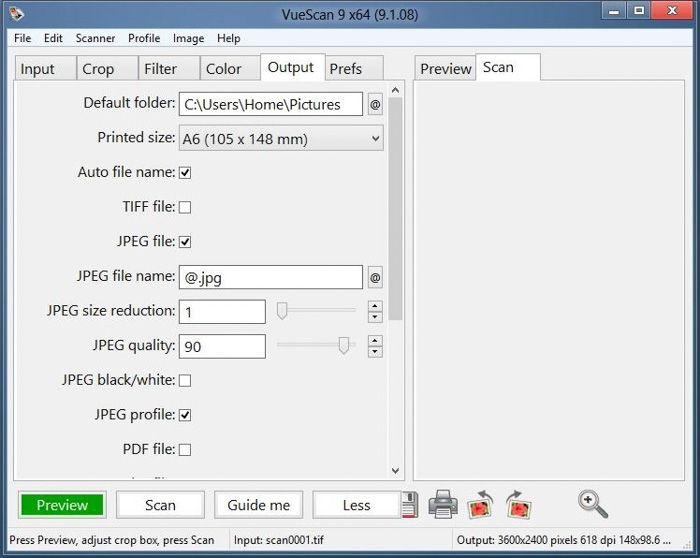

How to scan color negatives with vuescan how to#
Vuescan isn't what you would call, user friendly, so below I've laid out how to get actual scans and how to get them retaining as much detail as possible but also somewhat colour corrected to make editing them later on that little bit easier.ġ) first up you need to make sure 'lock film base color' + ' lock image color' found in the 'input' tab are unticked My boyfriend will probably hate me posting this but it's a good example of some newton rings running across his face. With this issue I often have to ignore the film loaders symbol and put the film in the other way with the curve of the film facing away from the glass and when I do this I need to tick ' mirror' in vuescan.

With flatbed scanners you really don’t want the film touching the glass or you’ll be left with what are known as Newton Rings (think 'oil slick' on your final scanned image and not in a good way either). This is all good and dandy but sometimes the film has a slight bend in it and if the bend points towards the glass this is uncool. If you load it this way, you won’t need to tick the mirror option in vuescan. So how do you know which way to load your film? My scanner’s film loader has a symbol to show you which way to load it – for my scanner it wants the film face down. Personally, I found vuescan was the best option in getting my scans base ready for final edits in photoshop (which I'll go on to discuss in Part 2) Vuescan does have a cost ($89.95) and if you're trying to do your whole process on the cheap, I do have a section down the bottom (scanning for free) if you want to head down that road.
How to scan color negatives with vuescan software#
I use vuescan, which is a third party scanning software to do my scans. This scanner has a designated loader/area for scans so it’s really straight forward. The way I do my scans is by using my MP980 Canon flatbed scanner. Most of my workflow is based on his, so if you want, stop reading mine and go read his! Before I go any further, I just want to say, photographer, Michael Fraser was my little angle, sent from above. Truth be told, it's actually quite simple once you have your workflow down pat but finding a workflow, yup that's the tough part! I wanted to put together a guide of how I scan my colour negatives as a resource not only for myself but for other lost souls out there. Let me start by saying scanning film is complex.


 0 kommentar(er)
0 kommentar(er)
